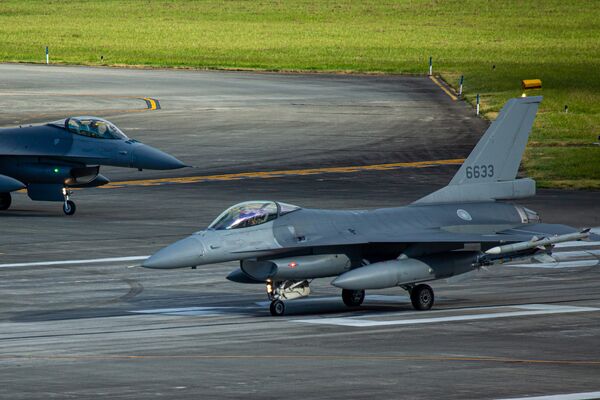
Taiwan is becoming increasingly reliant on its Lockheed Martin F-16 fleet in the face of growing Chinese air power in the region. (Annabelle Chih/Getty Images)
Lockheed Martin is working to resolve potential delays associated with F-16V Block 70/72 fighters ordered by Taiwan, the company told Janes on 30 May.
The Taiwanese Ministry of National Defense (MND) said on 24 May that a combination of technical problems and bottlenecks could delay the delivery of the fighter aircraft to Taiwan. Janes has earlier reported the Taiwan order of 66 F-16V Block 70/72 fighters. The order was preceded by the US government's approval for the USD8 billion deal in August 2019.
Speaking at the Taiwanese parliament earlier in May, Taiwanese Minister for National Defense Chiu Kuo-cheng initially attributed the delay of the F-16Vs to disruptions in the supply chain. On 25 May however, Kuo-cheng clarified that the delays were due to the F-16V's flight control software.
A Lockheed Martin spokesperson told Janes that the company “is working closely with the US government to address challenges in support of US security co-operation objectives”.
According to the MND, “the US Department of Defense has set up a high-level project supervision to ensure that Lockheed Martin is on schedule in three years”.
The MND added that the development of the flight control software was also delayed. However, it added that Lockheed Martin had rolled out two prototype F-16Vs earlier in 2023. These F-16V prototypes were being used to design and develop flight control software, the MND said. One of these F-16Vs was subsequently delivered to Bahrain, according to information held by Janes .
Looking to read the full article?
Gain unlimited access to Janes news and more...
